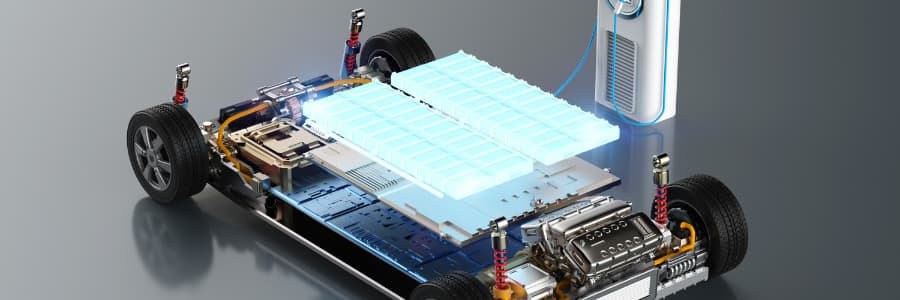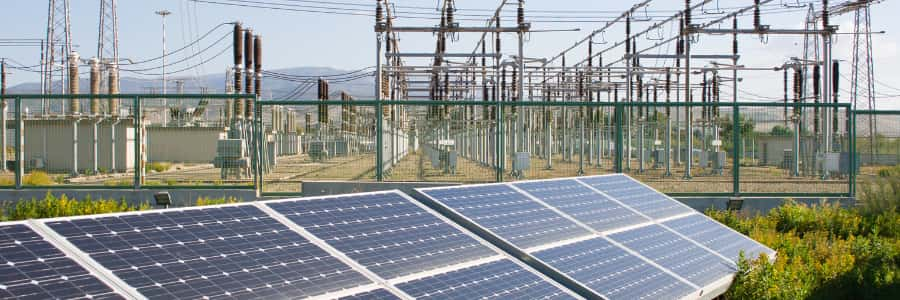The world of electric vehicles (EVs) is full of terms and abbreviations covering everything from performance over charging to maintenance and regulations.
Making sense of even the most common EV abbreviations and terms can be challenging.
This is where our guide comes in. This article aims to provide an overview for potential EV buyers, owners, enthusiasts and energy industry professionals. We have split it into separate categories and linked throughout to further reading material and insights.
If you are looking for a term not on the lists below, let us know – and we will add it to the article as soon as possible.

EV: Short for Electric Vehicle. This covers cars, vans, buses, trucks and more.
BEV: A Battery Electric Vehicle. A vehicle that runs exclusively on battery power.
PHEV: A Plug-in Hybrid Electric Vehicle. A vehicle with a battery-powered electric motor that can be charged similarly to BEV and a traditional internal combustion engine.
HEV: A Hybrid Electric Vehicle). This type of vehicle uses an internal combustion engine and an electric motor that does not plug in to charge but gets its power from the internal combustion engine.
ICE: An Internal Combustion Engine. A type of engine that runs on fuels like petrol or diesel to create power.
ZEV: A Zero-Emission Vehicle. A term to describe vehicles that emit no pollutants or emissions when driving. The term is mainly reserved for EVs and vehicles powered by hydrogen engines.

Power: The rate of energy transfer. You can think of it as how fast a car drives at a specific moment or the rate at which water flows out of a faucet.
Energy: The ability to transform power into work over time. You can think of it as how far a car can drive over a given period or how long filling a bucket with water from a faucet takes.
Watt: The measuring unit for power. It is often measured in thousands (kilowatts) or millions (megawatts).
Wh: A Watt-hour. An energy measure for using a watt of power continuously for an hour. You will more often see power consumption of one thousand watts for one hour (kWh) or a million watts for one hour (mWh) used in relation to the energy capacity of EVs, batteries and home equipment.
DC: Direct Current electricity.
AC: Alternate Current electricity.

EV Battery: A term for an EVs entire battery. See also battery pack.
Battery Cell: A term to describe individual EV battery cells or units.
Battery Module: A group of battery cells or units within a bigger pack. Modules can be distributed to support weight distribution or design requirements.
Battery Pack: The total shape and structure of an EV battery system, including cells, modules, management systems, cooling, and more.
Li-ion: A Lithium-ion rechargeable battery. This is the most commonly used type of battery for electric vehicles today.
LiFePO4: Lithium Iron Phosphate Battery. A type of lithium-ion battery chemistry known for safety and long cycle life.
NCA: Nickel Cobalt Aluminium Battery. A type of lithium-ion battery known for high energy density.
NMC: Nickel Manganese Cobalt Battery. A type of lithium-ion battery known for high power density and long cycle life.
NiMH: Nickel Metal Hydride Battery. A type of rechargeable battery that is sometimes used in hybrid electric vehicles.

DC Fast Charging: Direct current charging allows for rapid EV battery charging.
Level 1, 2, 3 Charging: There are three common types of charging: Level 1 is standard household charging, Level 2 is higher voltage, and Level 3 refers to DC fast charging.
CCS: A Combined Charging System. A standard for charging electric vehicles rapidly by DC at speeds up to 350kW.
SAE J1772 (also known as a J-plug): A North American EV charging plug standard for level 1 or level 2 charging speeds.
NACS: North American Charging Standard. This is also known as the Tesla charging standard (or a Tesla plug). Many other EV makers are adopting Tesla’s plug, which is becoming a universal standard.
CHAdeMO: A charging port and cable for DC fast charging adopted through much of Asia.
ChaoJi: A new ultra-fast charging connector that will deliver up to 900kW.
Mennekes: A popular Type 2 charging port in Europe that charges up to 250kW.
Bidirectional charging: The ability for an EV to both charge and export electricity to power to the grid or other electric units. This is also referred to as V2X (Vehicle-to-X) and V2G (Vehicle-to-Grid) capabilities.

Advanced smart charging: EV charging that is automated to coincide with the lowest prices and minimise climate impact. Charging can be controlled to support the energy grid and provide earning opportunities.
Smart charging is similar to advanced smart charging, but it has limited functionality, less grid support, and no earning opportunities.
EVs and load management: Refers to EVs’ ability to help balance grid loads and improve energy grid resilience, minimise costs, and boost grid resilience.
Dynamic load management: Real-time load management of EVs and support for ways to balance EV charging across multiple vehicles and chargers in real-time.
V2G: Vehicle-to-Grid technology.
V2X: Vehicle-to-X technology.
CPM: Charging Point Manager. The person, system or company that manages a charging point. This may differ from the charging point owner.
CPO: Charging Point Owner. The person, company, or organisation that owns a given charging point.
Charging point: A point at which EVs can charge.

Range: Generally refers to the distance an EV can travel on a single, full charge.
MPGe: Miles Per Gallon Equivalent. A measure to compare the energy consumption of electric vehicles with that of gasoline vehicles.
Regenerative Braking: A mechanism in EVs that recovers energy ICE cars lose during braking and uses it to recharge the battery.
O&M: Operations and Maintenance of EVs.
Torque: The force that drives the vehicle forward, notable for being instantly available in EVs. Torque is generally equal to acceleration capabilities.
DoD: Depth of Discharge. Refers to how much of an EV’s battery capacity you use in between charges. This is often measured in kWh or per cent.
Capacity: The overall capacity of an EV’s battery. Most often measured in kWh.
Charging time: Refers to the time it takes to charge an EV’s battery. This will vary based on multiple parameters, including how drained the battery is, the type of charging used, and more.
OTA Updates. Over-the-Air Updates of Software updates sent wirelessly to an EV to improve functionality or performance. Often known from Tesla.
Telematics: Technology used in vehicles to monitor location, movements, status, and behaviour. This is particularly prevalent in EVs for monitoring battery and performance status.
BMS: Battery Management System that monitors and manages the battery pack’s performance, safety, and longevity.
OBD-II: On-Board Diagnostics II is a standardised system that allows external electronics to interface with a vehicle’s computer system. It is used to diagnose and report the status of a vehicle’s engine and other subsystems.
HVAC: Heating, Ventilation, and Air Conditioning systems that control the cabin environment of a vehicle.
TPMS: Tire Pressure Monitoring System that monitors pressure and alerts drivers of safety hazards.

NCAP: New Car Assessment Program. Provides safety ratings for new vehicles, including EVs.
IP Rating: Ingress Protection Rating that describes the level of protection an electric vehicle’s enclosures offer against various objects and water.
GHG: Greenhouse gas emissions.
FMVSS: Federal Motor Vehicle Safety Standards is an American standard that sets minimum safety performance requirements for motor vehicles and equipment.
CE: Conformité Européenne Mark is a standard that verifies that a product meets EU safety, health, and environmental protection requirements. EVs and their components must have this mark to be sold in the European Economic Area.
RDE: Real Driving Emissions is a European measurement for vehicle emissions in real-world driving conditions, complementing laboratory tests. This ensures that EVs meet stringent environmental standards in everyday use.